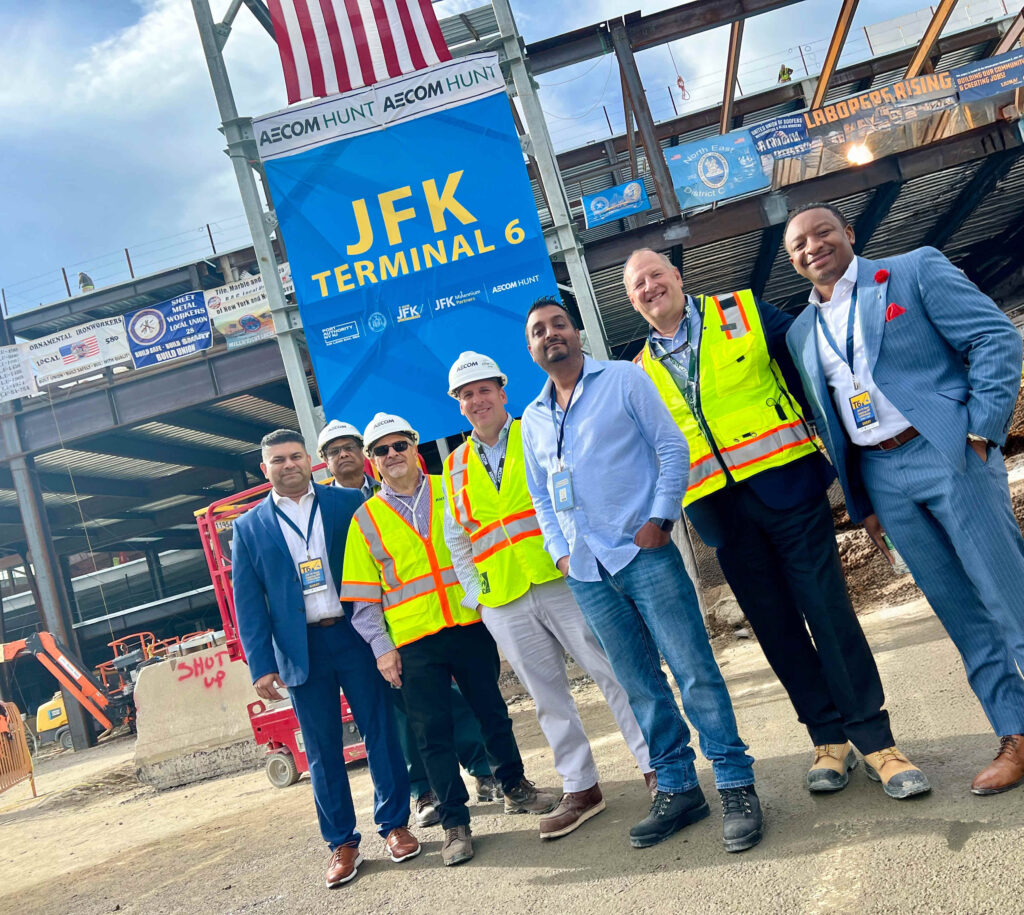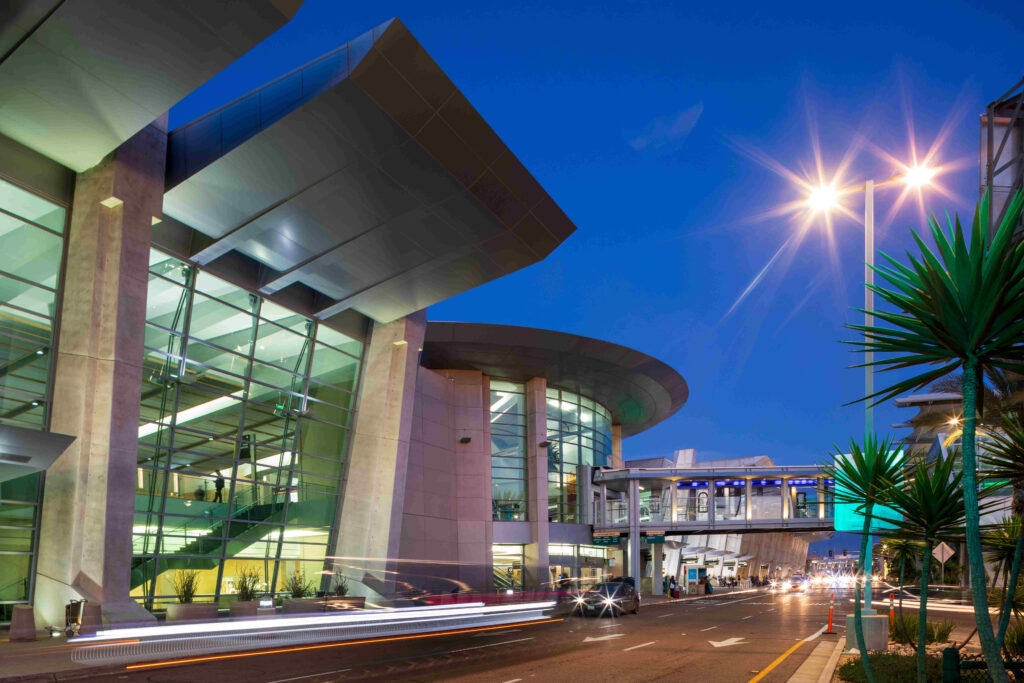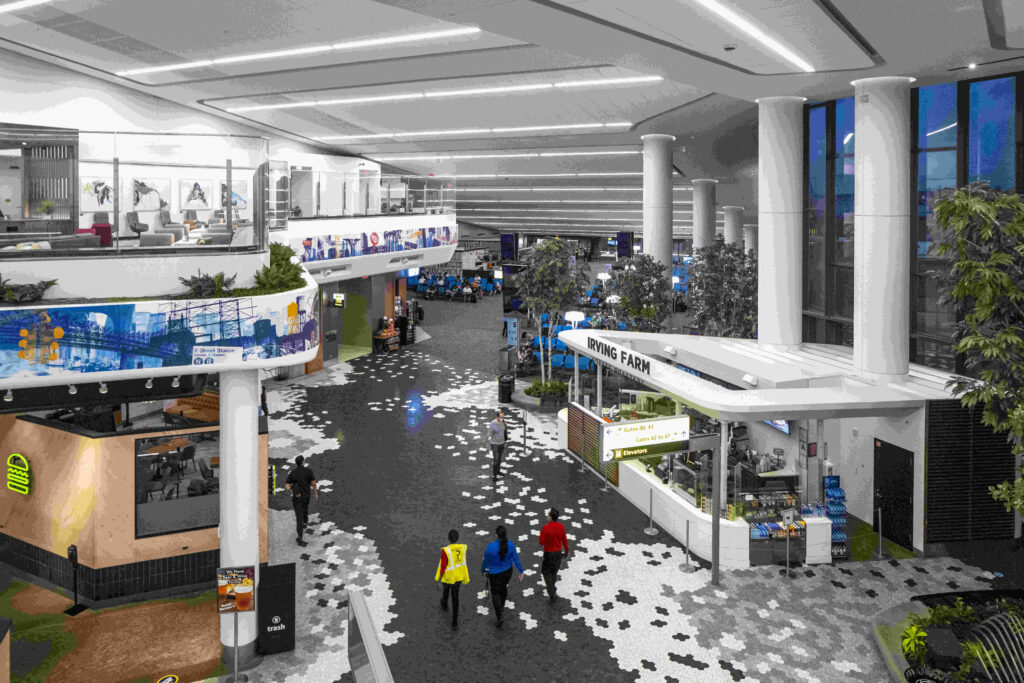Meeting a moving target: Upgrading for the next generation of air travel
Felipe Fraser specializes in infrastructure development, including finance, operations, commercial management, design and planning within the aviation industry. A former chief executive officer at APORT S.A., Zurich Airport’s Latin American branch, Felipe joined AECOM in June 2024 as an aviation program manager in the New York Metro, leveraging his 25 years’ experience with projects across the North and South America.
Thomas Amoia joined AECOM in May 2024 as vice president and senior transportation program manager in the New York Metro. Previously serving as the director of major capital projects for the Port Authority of New York and New Jersey, Thomas brings more than 30 years of construction experience on multi-billion-dollar capital programs.
A former program director for Delta Air Lines’ JFK redevelopment, George Guillaume joined AECOM’s New York Metro team in October 2024. He now applies his 20-plus years of aviation industry experience as senior aviation director and program manager serving airports in New York and New Jersey.
Air travel is booming. Global air passenger traffic is expected to double over the next 30 years, reaching about nine billion travelers annually by 2055. This is a pivotal moment to modernize airport infrastructure to meet growing needs and ensure long-term efficiency.
Growth is complicated — and expensive. Upgrading airports presents major challenges for agencies, developers, airlines and constructors. We understand the complexities of airport modernization and apply our expertise in strategic financing, construction and dedication to the customer experience to create airport terminal designs that are shaping aviation’s future.
Propelling progress
The Federal Aviation Administration estimates that U.S. airports will need more than $150 billion in infrastructure investments over the next five years. To meet this demand, agencies are turning to public-private partnerships (P3s) as financing models. In a P3, private investors finance, develop and may also operate the project under a long-term lease before returning it to the public agency.
P3 developers navigate financing complexities, revenue development, airline coordination and construction oversight. Developed by JFK Millenium Partners, the new 1.3-million-square-foot, 10-gate Terminal 6 at New York City’s JFK International Airport — where we serve as design-builder — is a prime example of a P3 in action.
JFK Millenium Partners secured private investment that established funding for Terminal 6 in partnership with the Port Authority of New York & New Jersey (PANYNJ), the agency/owner. Initial coordination between the developers and airlines resulted in a tailored design that optimized gate configurations and devised services that meet traveler and operational needs. Early airline commitments and long-term commercial strategies established reliable revenue and financial viability.
AECOM’s portfolio spans the entire PANYNJ network, reimagining terminal experiences across all the agency’s airports. Our aviation team delivered on-site construction management services for Delta Air Line’s Terminal C at LaGuardia Airport (LGA) and provided program and project management support services for LGA’s redevelopment program. We also provided program management for Newark Liberty International Airport’s recently completed Terminal A. And as part of a design-build team, we’ve completed critical airside infrastructure work such as Teterboro Airport’s air traffic control tower. In short, our aviation teams work collaboratively across all phases of development, design and construction to deliver spaces that move people efficiently and with purpose.
“Combining developers’ visions with airline insights provides for new world class infrastructure,” Felipe explains. “Our work across the metropolitan area’s airports is an excellent example of this, and is hugely beneficial for passengers, developers, airports and airlines.”

Faster, smarter construction
Many developers are turning to alternative delivery methods such as design-build, progressive design-build and construction manager at risk (CMAR) to maximize capital efficiency. Early collaboration, inherent in alternative delivery projects, offers greater control over budget, schedule and risk, resolving issues before construction begins and reducing delays — key advantages for complex operational sites like airports.
Our deep experience with alternative delivery has supported the San Diego County Regional Airport Authority (SDCRAA) since 2005, advancing major capital programs at San Diego International Airport (SAN). Under a PMCM contract, we helped develop procurement strategies, structure contracts and coordinate phased work to maintain operations.
In 2013, through the CMAR model and phased construction, SDCRAA delivered the 526,000-square-foot, 10-gate Terminal West expansion at SAN early and under budget. That same approach now guides the 1.2 million-square-foot, 30-gate Terminal 1 Replacement Program. With 19 gates opening in fall 2025, travelers are already benefiting from improved amenities and a more seamless airport journey — part of SDCRAA’s commitment to improving the travel experience while modernizing critical infrastructure.
“In the end, it’s about making travel easier and more comfortable,” says Thomas. “As a constructor, I know how phased construction helps us keep the airport running and deliver improvements without affecting the journey.”

From “worst” to first
LaGuardia Airport has undergone a remarkable transformation. Once infamous for outdated terminals, LGA’s $8 billion redevelopment — the first complete rebuild of a U.S. airport in over 25 years — is setting a new standard for efficiency, comfort and innovation. LGA’s Terminal B received UNESCO’s Prix Versailles as the world’s best new terminal in 2021, and since then the airport’s reputation as a world-class travel hub has continued to grow. Skytrax, a leading international airport rating organization, named Terminal B as the world’s best terminal in 2023 and awarded it five stars, a first for a North American airport terminal. And in 2025 Skytrax proclaimed LGA to be North America’s best airport for domestic and short-haul international travel.
Our team provided program and project management support services for the centerpiece of this 10-year airport program, replacing LGA’s outdated, 50-year-old Central Terminal Building. Our work included overseeing major upgrades to roads, bridges and utilities through the capital infrastructure program and contributing to the runway safety enhancement program, which extended and strengthened key runway sections.
The resulting 1.2 million-square-foot, 35-gate Terminal B — developed with extensive airline input — provides modern amenities and addresses specific operational needs. Outdated systems gave way to technologies like biometric screening to improve the traveler experience. Expanded lounges, larger gate areas, and broadened dining and shopping options prioritized customer comfort. An updated runway layout advanced airline operations and minimized pushback delays.
While working closely with the PANYNJ and its public-private partner LaGuardia Gateway Partners on Terminal B, we also coordinated with the Delta Air Lines team leading the redevelopment of terminals C and D to ensure smooth collaboration where infrastructure and operations intersected.
“Consistent, reliable terminals elevate airlines’ brands, ultimately turning the airport into travelers’ port of choice,” says George. “Through my decades of experience working with airlines, including leading the redevelopment of Delta’s terminals here at JFK, I understand the importance of their insight and how it goes a long way toward successful modernization.”

A talent trifecta
With a long record of expertise, our AECOM team brings unique insights, skills and capabilities to airport redevelopment across the U.S. and around the world.
“With Felipe’s deep understanding of development and P3s, Thomas’ agency construction knowledge and my involvement with the airlines, you have a trifecta of talent,” George says. “Add that to AECOM’s long history of delivering on these complex challenges for airports around the world, and you have a full suite of exceptional experience driving aviation modernization projects toward success.”






